Modeling phase equilibria for a water-CO2-hydrocarbon mixture using CPA equation of state in CO2 injection EOR-storage processes: a Colombian case study
Abstract
Currently, it is necessary to reduce CO2 emissions into the atmosphere. The oil industry in Colombia can contribute through CO2 injection processes in depleted fields. To achieve this, it is essential to have knowledge of the physicochemical interactions of CO2 with reservoir fluids. To integrate CO2, water and hydrocarbon phases, advanced models are required that capture the phenomenology of thermodynamic equilibrium. The CPA (Cubic-Plus-Association) equation of state is an equation that adds an associative term to model the interaction of water with the hydrocarbon and CO2 phase.
In this work, the CO2 injection process is thermodynamically modeled in a depleted Colombian reservoir case study. There is a compositional fluid with a gradient of PVT properties in a vertical relief of 10,000 ft at a depletion condition of 2,000 psi @ 15,374 ft and an oil-water contact (OWC) at 17,000 ft. CO2 injections between 10 and 80 mol% were carried out, and through the CPA equation of state, the swelling conditions of the crude oil, the solubility of CO2 in the formation water and the pressurization of the system were evaluated. The associative parameters of the equation were taken from literature and estimated through molecular dynamics simulations of water-CO2-Hydrocarbon interactions.
This thermodynamic modeling with an advanced equation of state and use of molecular dynamics simulations allowed us to simulate different CO2 injection scenarios in a compositional fluid. The development of these types of studies is key to carrying out successful CO2 injection processes focused on enhanced recovery (EOR) and CO2 storage in the porous medium in a Colombian-depleted compositional reservoir.
References
Al Ghafri, S. Z., & Trusler, J. P. M. (2019). Phase equilibria of (Methylbenzene + Carbon dioxide + Methane) at elevated pressure: Experiment and modelling. Journal of Supercritical Fluids, 145. 1-9. https://doi.org/10.1016/j.supflu.2018.11.012
Arya, A., von Solms, N., & Kontogeorgis, G. M. (2015). Determination of asphaltene onset conditions using the cubic plus association equation of state. Fluid Phase Equilibria, 400, 8–19. https://doi.org/10.1016/j.fluid.2015.04.032
Arya, A., Von Solms, N., & Kontogeorgis, G. M. (2016). Investigation of the Gas Injection Effect on Asphaltene Onset Precipitation Using the Cubic-Plus-Association Equation of State. Energy and Fuels, 30(5), 3560–3574. https://doi.org/10.1021/acs.energyfuels.5b01874
Avendaño, C., Lafitte, T., Galindo, A., Adjiman, C. S., Jackson, G., & Müller, E. A. (2011). SAFT-γ force field for the simulation of molecular fluids. 1. A single-site coarse grained model of carbon dioxide. Journal of Physical Chemistry B, 115(38), 11154-11169. https://doi.org/10.1021/jp204908d
Baklid, A., Korbol, R., & Owren, G. (1996, October). Sleipner Vest CO2 disposal, CO2 injection into a shallow underground aquifer. In SPE Annual Technical Conference and Exhibition? (pp. SPE-36600). SPE. https://doi.org/10.2118/36600-MS
Bian, X. Q., Xiong, W., Kasthuriarachchi, D. T. K., & Liu, Y. B. (2019). Phase equilibrium modeling for carbon dioxide solubility in aqueous sodium chloride solutions using an association equation of state. Industrial and Engineering Chemistry Research, 58(24). 10570-10578. https://doi.org/10.1021/acs.iecr.9b01736
Bjørner, M. G. (2016). Thermodynamic modeling of CO2 mixtures. https://orbit.dtu.dk/files/128129274/Thesis_mgabj_final.pdf
Bjørner, M. G., & Kontogeorgis, G. M. (2016). Modeling derivative properties and binary mixtures with CO2 using the CPA and the quadrupolar CPA equations of state. Fluid Phase Equilibria, 408, 151-169. https://doi.org/10.1016/j.fluid.2015.08.011.
Chabab, S., Théveneau, P., Corvisier, J., Coquelet, C., Paricaud, P., Houriez, C., & Ahmar, E. El. (2019). Thermodynamic study of the CO2 – H2O – NaCl system: Measurements of CO2 solubility and modeling of phase equilibria using Soreide and Whitson, electrolyte CPA and SIT models. International Journal of Greenhouse Gas Control, 91. 102825. https://doi.org/10.1016/j.ijggc.2019.102825
Chen, Z., Zhou, Y., & Li, H. (2022). A Review of Phase Behavior Mechanisms of CO2 EOR and Storage in Subsurface Formations. Industrial and Engineering Chemistry Research, 61(29), 10298-10318. https://doi.org/10.1021/acs.iecr.2c00204
Danten, Y., Tassaing, T., & Besnard, M. (2005). Ab initio investigation of vibrational spectra of water−(CO2) n complexes (n= 1, 2). The Journal of Physical Chemistry A, 109(14), 3250-3256. https://doi.org/10.1021/jp0503819
Dufal, S., Papaioannou, V., Sadeqzadeh, M., Pogiatzis, T., Chremos, A., Adjiman, C. S., ... & Galindo, A. (2014). Prediction of thermodynamic properties and phase behavior of fluids and mixtures with the SAFT-γ Mie group-contribution equation of state. Journal of Chemical & Engineering Data, 59(10), 3272-3288. https://doi.org/10.1021/je500248h
Ennis-King, J., & Paterson, L. (2002, October). Engineering aspects of geological sequestration of carbon dioxide. In SPE Asia Pacific Oil and Gas Conference and Exhibition (pp. SPE-77809). SPE. https://doi.org/10.2523/77809-MS
Headen, T. F., Boek, E. S., Jackson, G., Totton, T. S., & Müller, E. A. (2017). Simulation of Asphaltene Aggregation through Molecular Dynamics: Insights and Limitations. Energy and Fuels, 31(2), 1108–1125. https://doi.org/10.1021/acs.energyfuels.6b02161
Herdes, C., Totton, T. S., & Müller, E. A. (2015). Coarse grained force field for the molecular simulation of natural gases and condensates. Fluid Phase Equilibria, 406, 91-100. https://doi.org/10.1016/j.fluid.2015.07.014
Hockney, R. W. 0, & Eastwood, J. W. (1988). Computer Simulation Using Particles (A. Hilger, Ed.). https://doi.org/10.1201/9780367806934
Houoway, S., & Survey, B. G. (1993). The potential for aquider disposal of carbon dioxide in the UK. Energy Conversion and Management, 34(9–11), 925–932. https://doi.org/10.1016/0196-8904(93)90038-C
Huang, S. H., & Radosz, M. (1990). Equation of state for small, large, polydisperse, and associating molecules. Industrial & Engineering Chemistry Research, 29(11), 2284–2294. https://doi.org/10.1021/ie00107a014
IEA. (2008). Energy technology perspective. Scenario and strategies to 2050. In Strategies (Issue June). https://iea.blob.core.windows.net/assets/0e190efb-daec-4116-9ff7-ea097f649a77/etp2008.pdf
Javanbakht, G., Sedghi, M., Welch, W., & Goual, L. (2015). Molecular dynamics simulations of CO2/water/quartz interfacial properties: Impact of CO2 dissolution in water. Langmuir, 31(21), 5812–5819. https://doi.org/10.1021/acs.langmuir.5b00445
Jindrova, T., Mikyška, J., & Firoozabadi, A. (2016). Phase behavior modeling of bitumen and light normal alkanes and CO2 by PR-EOS and CPA-EOS. Energy & Fuels, 30(1), 515-525. https://doi.org/10.1021/acs.energyfuels.5b02322
Larsen, B., Rasaiah, J. C., & Stell, G. (1977). Thermodynamic perturbation theory for multipolar and ionic liquids. Molecular Physics, 33(4), 987-1027. https://doi.org/10.1080/00268977700100901
Li, J., Topphoff, M., Fischer, K., & Gmehling, J. (2001). Prediction of gas solubilities in aqueous electrolyte systems using the predictive Soave− Redlich− Kwong model. Industrial & engineering chemistry research, 40(16), 3703-3710. https://doi.org/10.1021/ie0100535
Li, Z., & Firoozabadi, A. (2010). Cubic-plus-association equation of state for asphaltene precipitation in live oils. Energy & Fuels, 24(5), 2956–2963. https://doi.org/10.1021/ef9014263
Martinsen, S. Ø., Castiblanco, L., Osorio, R., & Whitson, C. H. (2010, September). Advanced Fluid Characterization of Pauto Complex, Colombia. In SPE Annual Technical Conference and Exhibition? (pp. SPE-135085). SPE. https://doi.org/10.2118/135085-MS
Moncayo-Riascos, I., Lozano, M. M., Hoyos, B. A., Franco, C. A., Riazi, M., & Cortés, F. B. (2021). Physical Insights about Viscosity Differences of Asphaltene Dissolved in Benzene and Xylene Isomers: Theoretical–Experimental Approaches. Energy & Fuels, 35(22), 18574–18582. https://doi.org/10.1021/acs.energyfuels.1c03348
Moncayo-Riascos, I., Rojas-Ruiz, F. A., Orrego-Ruiz, J. A., Cundar, C., Torres, R. G., & Cañas-Marín, W. (2022). Reconstruction of a synthetic crude oil using petroleomics and molecular dynamics simulations: A multistructural approach to understanding asphaltene aggregation behavior. Energy & Fuels, 36(2), 837-850. https://doi.org/10.1021/acs.energyfuels.1c03497
Monteiro, M. F., Moura-Neto, M. H., Pereira, C. G., & Chiavone-Filho, O. (2020). Description of phase equilibrium and volumetric properties for CO2+water and CO2+ethanol using the CPA equation of state. Journal of Supercritical Fluids, 161, 104841. https://doi.org/10.1016/j.supflu.2020.104841
Nascimento, F. P., Costa, G. M. N., & Vieira de Melo, S. A. B. (2019). A comparative study of CPA and PC-SAFT equations of state to calculate the asphaltene onset pressure and phase envelope. Fluid Phase Equilibria, 494, 74–92. https://doi.org/10.1016/j.fluid.2019.04.027
Nasrabadi, H., Moortgat, J., & Firoozabadi, A. (2016). New three-phase multicomponent compositional model for asphaltene precipitation during CO2 injection using CPA-EOS. Energy & Fuels, 30(4), 3306-3319. https://doi.org/10.1021/acs.energyfuels.5b02944
Negahban, S., Kazemi, M., Kalantari, M., Dindoruk, B., & Elshahawi, H. (2020). “Digital Fluid Physics”: Prediction of phase equilibria for several mixtures of CO2 with petroleum fluid systems. Journal of Petroleum Science and Engineering, 187, 106752. https://doi.org/10.1016/j.petrol.2019.106752
Oliveira, M. B., Queimada, A. J., Kontogeorgis, G. M., & Coutinho, J. A. P. (2011). Evaluation of the CO2 behavior in binary mixtures with alkanes, alcohols, acids and esters using the Cubic-Plus-Association Equation of State. Journal of Supercritical Fluids, 55(3), 876–892. https://doi.org/10.1016/j.supflu.2010.09.036
Papaioannou, V., Calado, F., Lafitte, T., Dufal, S., Sadeqzadeh, M., Jackson, G., ... & Galindo, A. (2016). Application of the SAFT-γ Mie group contribution equation of state to fluids of relevance to the oil and gas industry. Fluid Phase Equilibria, 416, 104-119. https://doi.org/10.1016/j.fluid.2015.12.041
Péneloux, A., Rauzy, E., & Fréze, R. (1982). A consistent correction for Redlich-Kwong-Soave volumes. Fluid Phase Equilibria, 8(1), 7–23. https://doi.org/10.1016/0378-3812(82)80002-2
Peng, D.-Y., & Robinson, D. B. (1976). A new two-constant equation of state. Industrial & Engineering Chemistry Fundamentals, 15(1), 59–64. https://doi.org/10.1021/i160057a011
Plimpton, S. (1995). Fast Parallel Algorithms for Short – Range Molecular Dynamics. Journal of Computational Physics, 117, 1–19. https://doi.org/10.1006/jcph.1995.1039
Ramírez, L., Moncayo-Riascos, I., Cortés, F. B., Franco, C. A., & Ribadeneira, R. (2021). Molecular dynamics study of the aggregation behavior of polycyclic aromatic hydrocarbon molecules in n-heptane-toluene mixtures: Assessing the heteroatom content effect. Energy and Fuels, 35(4), 3119–3129. https://doi.org/10.1021/acs.energyfuels.0c04153
Sanchez-Vicente, Y., Tay, W. J., Al Ghafri, S. Z., & Trusler, J. M. (2018). Thermodynamics of carbon dioxide-hydrocarbon systems. Applied Energy, 220, 629-642. https://doi.org/10.1016/j.apenergy.2018.03.136
Sun, X., Wang, Z., Li, H., He, H., & Sun, B. (2021). A simple model for the prediction of mutual solubility in CO2-brine system at geological conditions. Desalination, 504, 114972. https://doi.org/10.1016/j.desal.2021.114972
Tsivintzelis, I., Ali, S., & Kontogeorgis, G. M. (2015). Modeling phase equilibria for acid gas mixtures using the CPA equation of state. Part IV. Applications to mixtures of CO2 with alkanes. Fluid Phase Equilibria, 397, 1-17. https://doi.org/10.1016/j.fluid.2015.03.034
Tsivintzelis, I., & Kontogeorgis, G. M. (2015). Modelling phase equilibria for acid gas mixtures using the CPA equation of state. Part V: Multicomponent mixtures containing CO2 and alcohols. The Journal of Supercritical Fluids, 104, 29-39. https://doi.org/10.1016/j.supflu.2015.05.015
Tsivintzelis, I., Kontogeorgis, G. M., Michelsen, M. L., & Stenby, E. H. (2011). Modeling phase equilibria for acid gas mixtures using the CPA equation of state. Part II: Binary mixtures with CO2. Fluid Phase Equilibria, 306(1), 38-56. https://doi.org/10.1016/j.fluid.2011.02.006
Valtz, A., Chapoy, A., Coquelet, C., Paricaud, P., & Richon, D. (2004). Vapour–liquid equilibria in the carbon dioxide–water system, measurement and modelling from 278.2 to 318.2 K. Fluid phase equilibria, 226, 333-344. https://doi.org/10.1016/j.fluid.2004.10.013
Van der Meer, L. G. H. (1993). The conditions limiting CO2 storage in aquifers. Energy Conversion and Management, 34(9-11), 959-966. https://doi.org/10.1016/0196-8904(93)90042-9
Van Der Meer, L. G. H., Van der Straaten, R., & Griffioen, J. (1995). Storage of carbon dioxide in aquifers in The Netherlands. In Studies in Environmental Science (Vol. 65, pp. 1099-1104). Elsevier. https://doi.org/10.1016/S0166-1116(06)80133-0
Van Rooijen, W. A., Habibi, P., Xu, K., Dey, P., Vlugt, T. J. H., Hajibeygi, H., & Moultos, O. A. (2023). Interfacial tensions, solubilities, and transport properties of the H2/H2O/NaCl system: A molecular simulation study. Journal of Chemical & Engineering Data, 69(2), 307-319. https://doi.org/10.1021/acs.jced.2c00707
William, H. (1996). VMD-visual molecular dynamics. Journal of molecular graphics, 14, 33-38. https://doi.org/10.1016/0263-7855(96)00018-5
Yang, Y., Chaisoontornyotin, W., & Hoepfner, M. P. (2018). Structure of asphaltenes during precipitation investigated by ultra-small-angle x-ray scattering. Langmuir, 34(35), 10371-10380. https://doi.org/10.1021/acs.langmuir.8b01873
Downloads
Copyright (c) 2024 CT&F - Ciencia, Tecnología y Futuro

This work is licensed under a Creative Commons Attribution-NonCommercial-ShareAlike 4.0 International License.

| Article metrics | |
|---|---|
| Abstract views | |
| Galley vies | |
| PDF Views | |
| HTML views | |
| Other views | |











